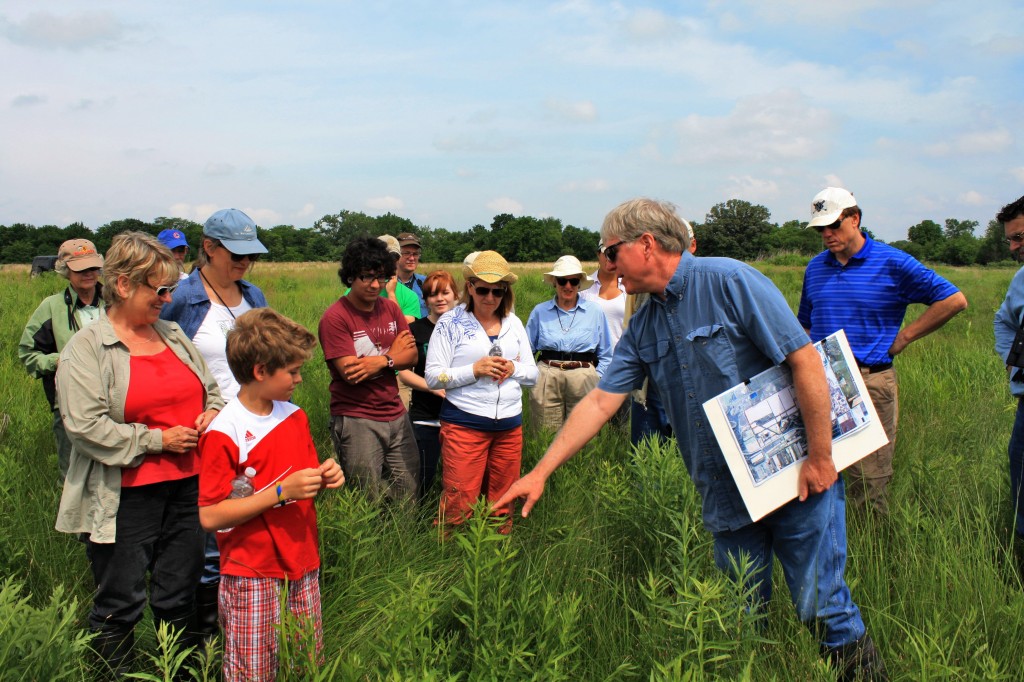Once drained to make room for agriculture, two Illinois lakes have undergone a dramatic transformation. Listen up:
Just add water? That was the recipe for success in Illinois’ Hennepin and Hopper Lakes, which used to be drained to make room for crops. Restoring these lakes to their natural state was an important undertaking.

You, too, can take a tour of this VIP restored wetland area — like the one Gary Sullivan is leading above (via the Wetlands Initiative)
For one thing, keeping the land dry had never been easy. According to ecologist Gary Sullivan of the Wetlands Initiative (TWI), “it’s kind of like a bathtub that just keeps filling.”
So when TWI restored the land, it stopped pumping water out—and that’s when the eco-magic happened.
“Once water got on that landscape, aquatic plants just started germinating across these corn and soybean fields, where they hadn’t seen water in nearly 100 years,” says Sullivan. “And it was absolutely astounding.”
The restoration was so successful, those once-sodden corn fields are now home to the beautiful Dixon Waterfowl Refuge. Today, visitors flock to the area for some of the best bird-watching in Illinois.
Get schooled:
- Read up on the many native plants and animals that now thrive in the Hennepin/Hopper restoration area
- Learn more about the significance of wetlands from the NWF
The fine print:
- This segment was produced in partnership with Cornell’s Atkinson Center for a Sustainable Future




